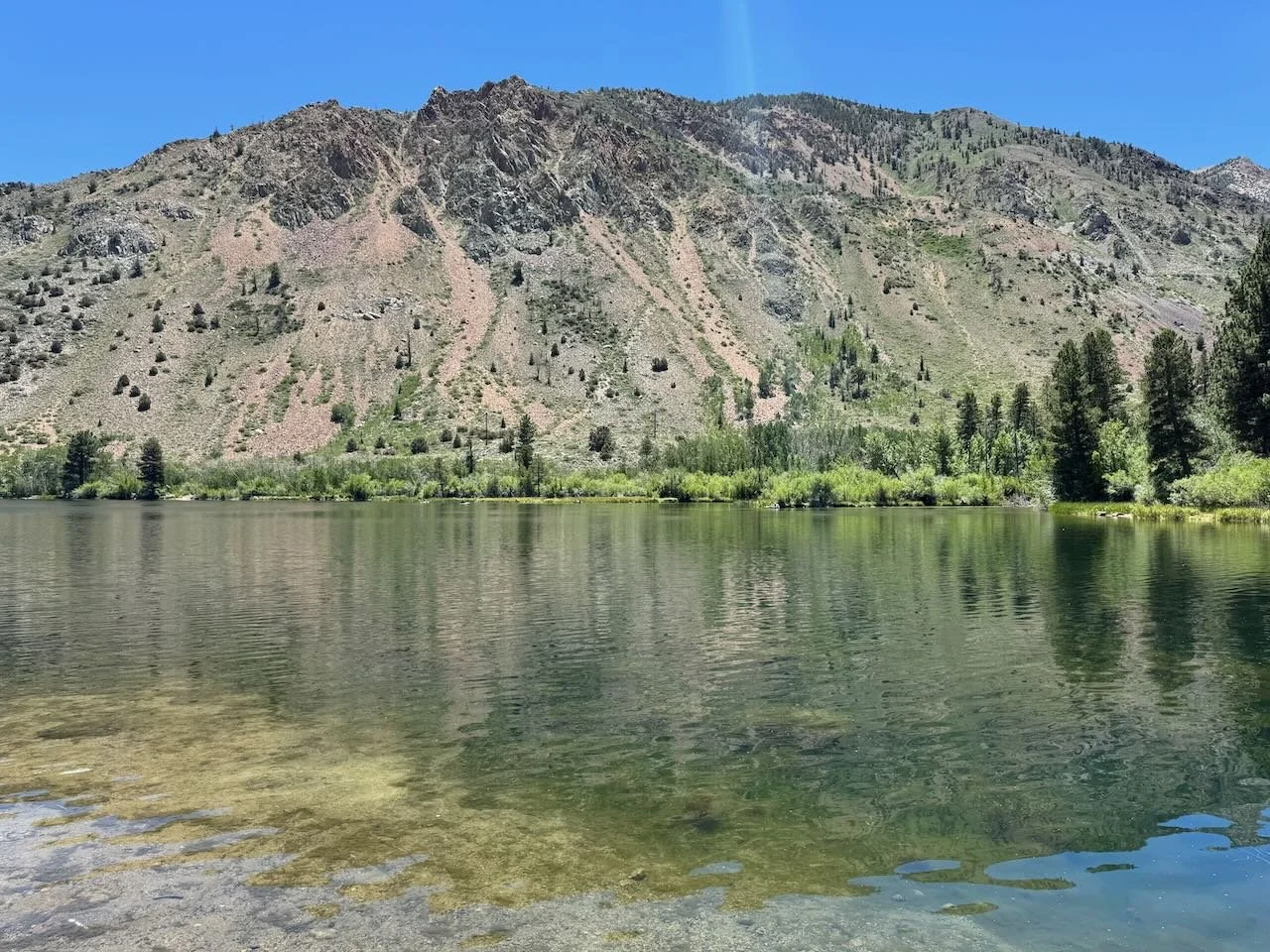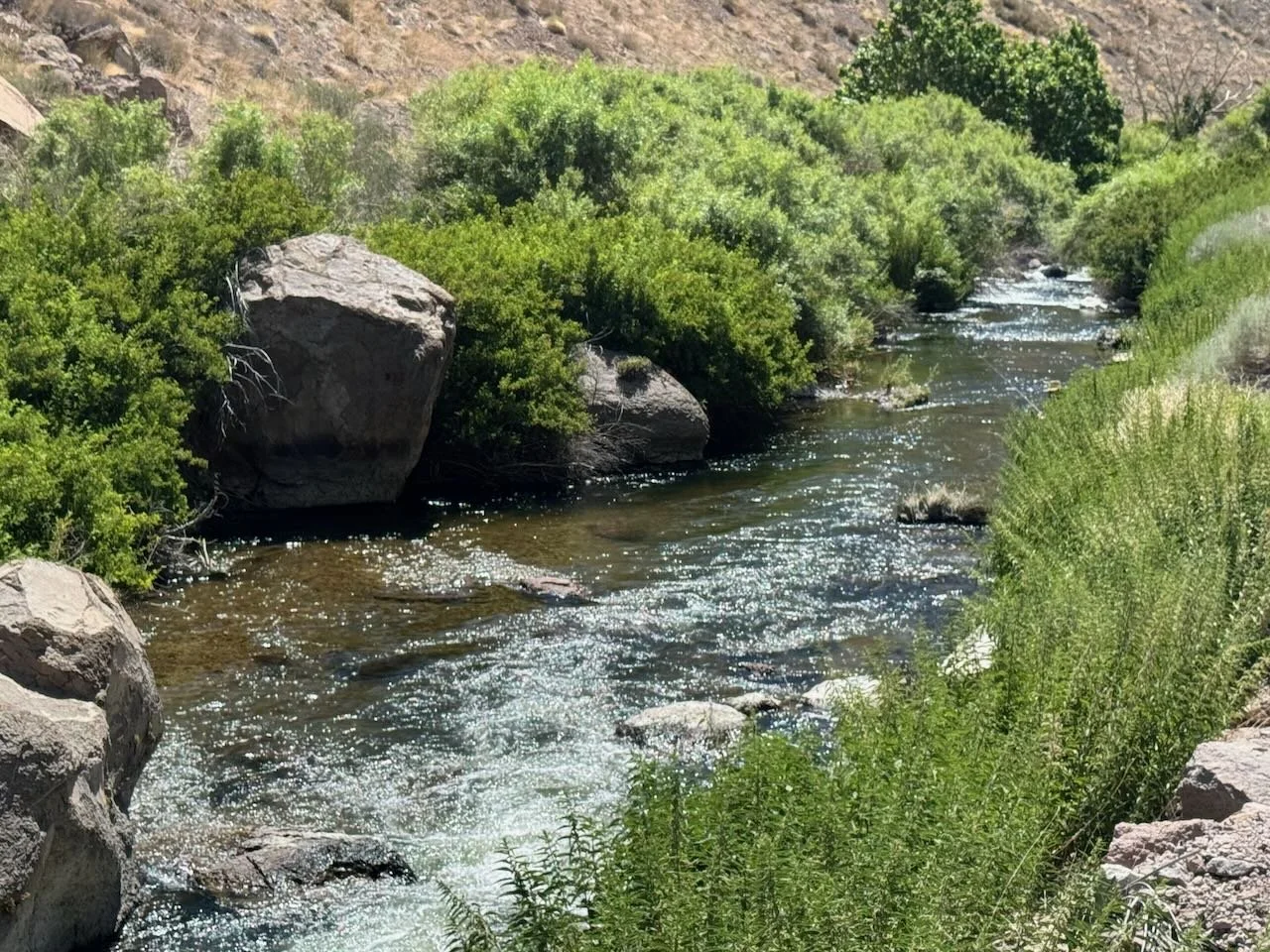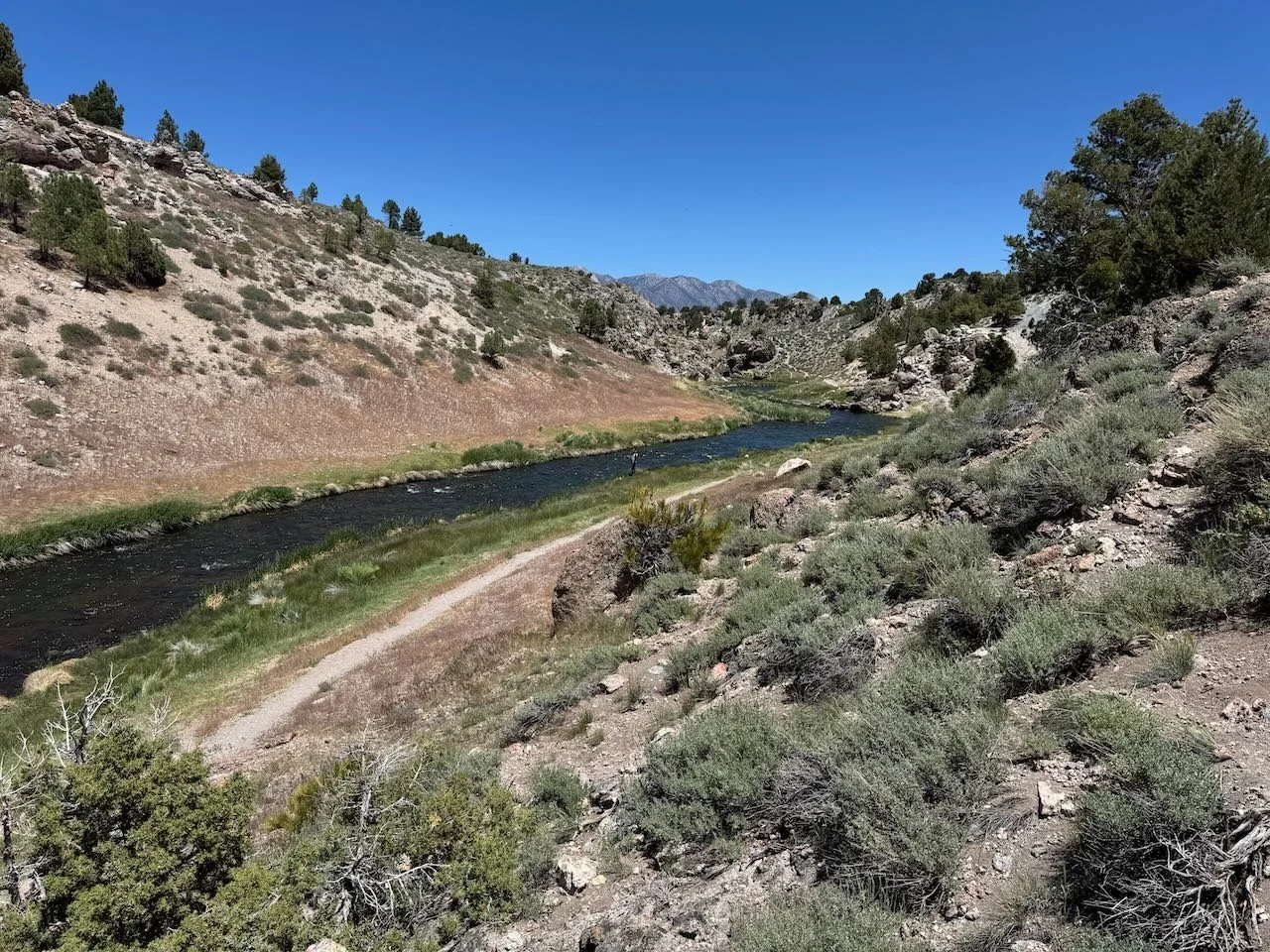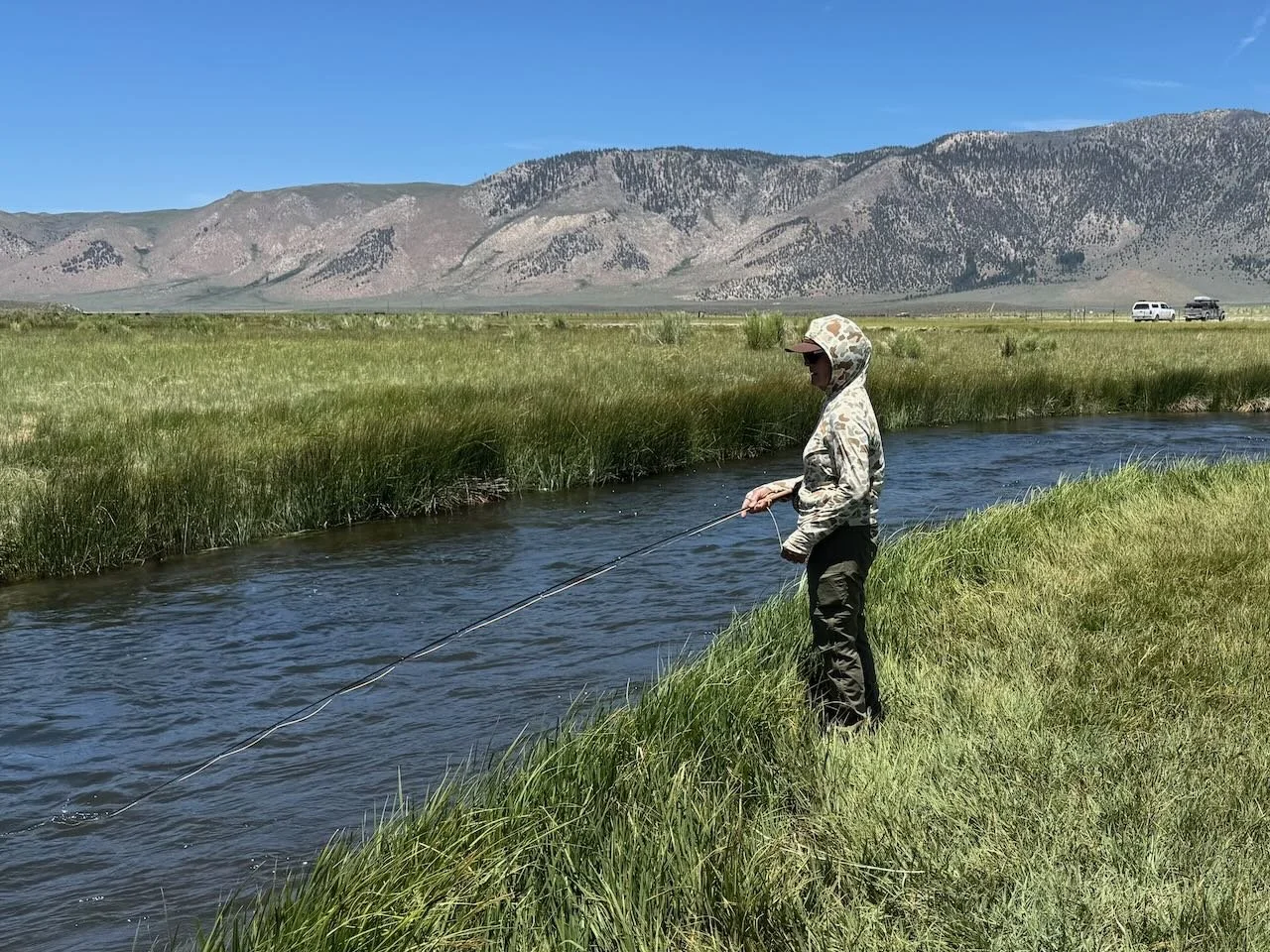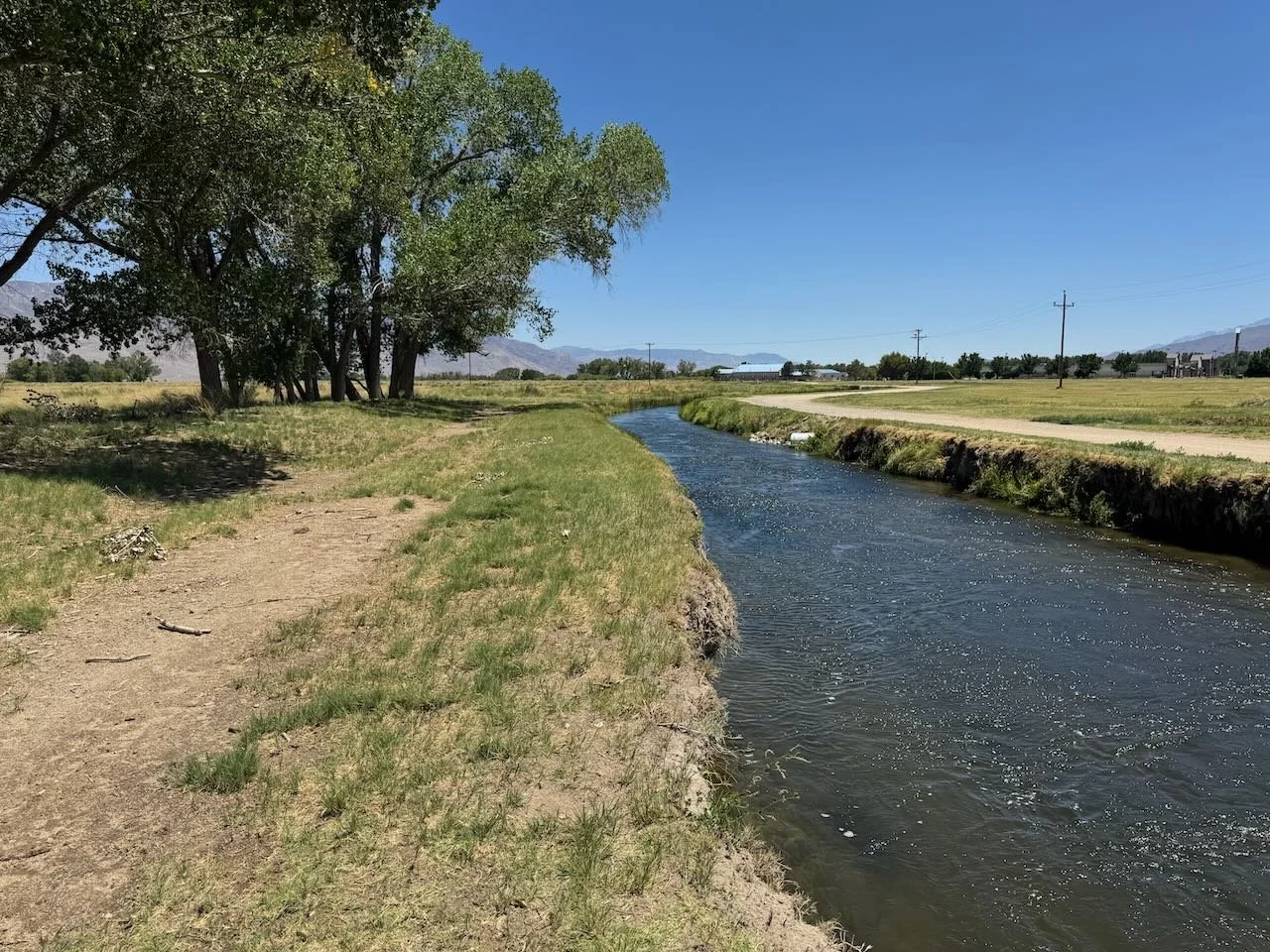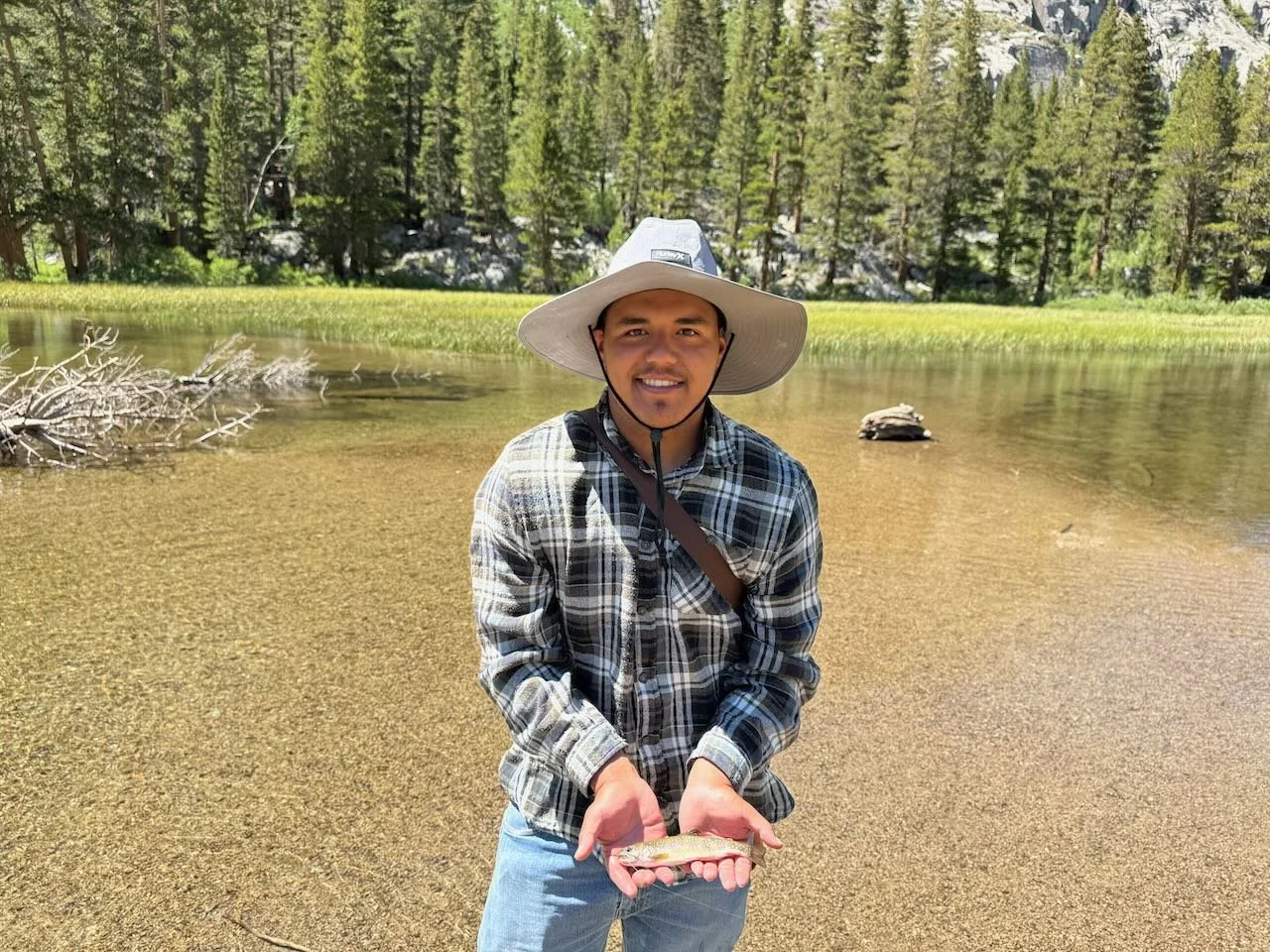Summer is definitely here as temperatures in the Owens Valley are expected to break the 100 degree mark by early next week. With the hot temperatures comes the afternoon winds. Now is the time to head up in elevation to find cooler weather. One of the advantages to the Eastern Sierra is the ability to change elevation locations to find the weather and temperatures to the fly fishers liking. Hatches of stoneflies, mayflies and caddis flies are fueling the feeding trout on the substrate and on the surface. Midges continue to be the insect the trout are feeding on in the lakes. Backcountry waters are open to hikers looking to fly fish away from the beaten path. Be sure to have insect repellant handy as it is mosquito season.
Float tubers are taking advantage of the cool water and cooler air temperatures at the higher elevation on Intake Two on a hot July day in the Eastern Sierra.
Owens River Gorge:
Morning to early afternoons is the perfect time to be fly fishing in the Owens River Gorge. This is perfect water to fish a dry and dropper rig and wet wade. Easiest access to the gorge is at the middle or upper Gorge Power Plant Roads. Park your vehicle at the parking areas off the gated paved road and walk into the gorge. Bring plenty of water for fishing and the hike out. There are extensive stands of stinging nettle to be avoided. Watch for rattle snakes. For the dry fly fish with high visibility and high floating dry flies like stimulators, Adams parachutes, elk hair caddis and Chernobyl ants. Size 16 bead head flash back gold ribbed hare’s ear nymph, size 18 bead head flash back pheasant tail nymph and size 18 olive quilldigon.
The easiest way to fly fish in the Owens River Gorge is to get in the river and wade upstream casting a dry and dropper rig in the pools and pocket waters.
Hot Creek
Interpretive Site:
Consistent morning hatches are bringing the trout to the surface and the fly fishers flocking to the creek. The morning hatches start with the hatching of the female trico. This is followed by the caddis migration. During the migration caddis that crash onto the water’s surface do not last long as the trout know an easy meal for them. Next comes the blue wing olive and pale morning dun hatch. Key to success is fishing with long leaders, light tippets 6X and 7X and a drag free drift. Start out with size 22 female trico parachutes, size 20 gray caddis parachutes and size 22 trico spinners. When these flies quit producing switch to size 20 blue wing olive parachutes, size 20 blue wing olive sparkle duns and if you see pale morning duns on the water use a size 16 pale morning dun parachute.
Fly fishers are taking advantage of the hatching mayflies and caddis by fishing dry flies in the and around the weed beds in Hot Creek Canyon.
Hot Creek
Canyon Section:
Summer time in Hot Creek Canyon is pretty much limited to dry fly fishing as it’s tough to get a nymph to drift in the tiny lanes between the weed beds. While most fly fishers want their flies to drift next to the far bank, they forget to drift their flies next to the bank they are standing on. This is a great place to drift a dry fly during the mayfly hatches. If you are willing to wrangle you nymphs through the weed beds a size 20 gray La Fontaine’s caddis emerger, size 12 stoner nymphs, size 16 bead head flash back gold ribbed hare’s ears, and size 18 bead head flash back pheasant tail nymphs will produce trout during the hatch. Dry flies can be floated in the tiny lanes between the weeds and if they float over the weeds they’re less likely to snag. Fish with, size 20 gray parachute caddis, size 20 gray elk hair caddis, size 20 blue wing olive parachutes, size 22 trico spinners and size 22 female trico parachutes to fool the wild brown and rainbow trout of Hot Creek Canyon.
Nymphing in the mornings is producing some nice sized rainbow and brown trout with size 18 bead head flash back pheasant tail nymphs.
Upper Owens River
Above Benton Crossing Bridge:
With afternoon winds coming up between noon and 1:00 P.M. each day mornings are providing the best fly fishing opportunities. Nymphing the deep holes with size 12 stoner nymphs, size 18 bead head flash back pheasant tail nymphs and size 16 bead head flash back gold ribbed hare’s ears is producing rainbow and brown trout to 18 inches. Resident rainbow and brown trout to 12 inches are feeding on mayflies and caddis flies. Nymphing with size 20 tiger midges, size 20 zebra midges, size 20 blood midges, size 18 olive quilldigons, size 16 hot spot pheasant tail nymphs and size 16 SOS nymphs is fooling the juvenile trout. On the surface late morning and early afternoons before the winds come up fish with size 16 elk hair caddis, size 16 Adams parachutes, size 16 pale morning dun parachutes and size 16 stimulators.
Early morning midge hatches and late evening ovipositing caddis are bringing the trout to the surface.
Bishop Creek Canal
Behind Bishop Veterinary Hospital:
Afternoons are hot and windy and few trout are feeding. Best fly fishing opportunities are in the early mornings and late evenings. There is a caddis ovipositing event in the evenings when the sun goes behind the Sierra Mountain. A size 16 elk hair caddis skittered across the stream and up the near bank will produce hard hitting brown trout to 14 inches. Be sure to use lots of insect repellant to keep the mosquitoes at bay. Nymphing in the mornings before 10:00 A.M. is producing trout with size 18 tiger midges, size 18 bead head flash back pheasant tail nymphs, size 16 hot spot pheasant tail nymphs, size 18 olive quilldigons and size 12 stoner nymphs.
Mike Camarena showing off a brook trout that took his size 18 elk hair caddis on Weir Pond on the south fork of Bishop Creek.
Bishop Creek Canyon
Weir Pond:
For fly fishers looking to beat the heat in the Owens Valley going up to 8,000 to 9,000 feet will give air temperatures 15 degrees cooler and offer cold water to fish in. Weir Pond on the south fork of Bishop Creek is a great spot for catching wild brown trout and brook trout on a dry fly or dry and dropper rig. Wet wading is cold and waders will keep you warmer. The trout are taking size 16 Adams Parachutes, size 16 royal Wulff’s and size 16 elk hair caddis on the surface. For nymphs use size 18 tiger midges, size 18 zebra midges, size 18 bead head flash back pheasant tail nymphs and size 16 bead head flash back gold ribbed hare’s ears.

